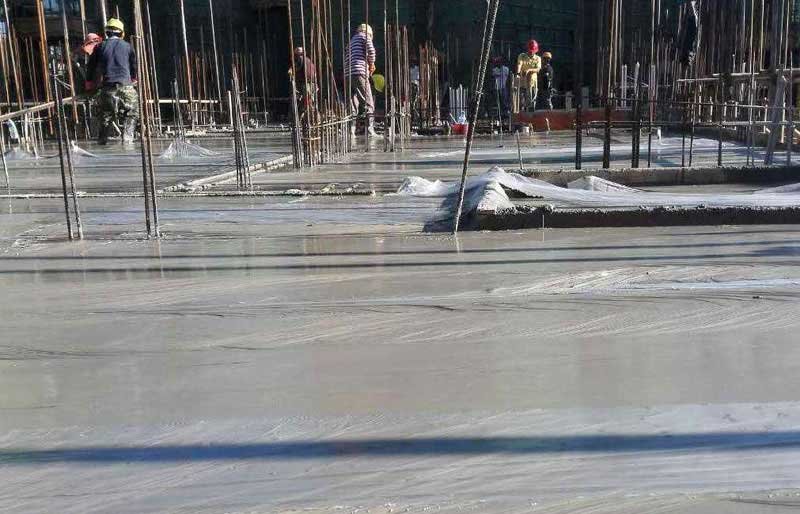
Concrete production exists around the globe and is one of the leading construction materials, essentially man-made stone that has become a most versatile and universally recognized tool to build with. The bulk of the materials, or 80% of all ingredients in concrete, are naturally abundant aggregate, while the other fifth (20%) constitutes a binder, or glue, primarily composed of cement and supplementary cementitious materials (SCM) in combination with water. Hydraulic cement, globally the primary binder material utilized, is in approximate production of two billion tons per annum, used to produce about 2.5 tons of concrete per person on the planet.
A comparatively small amount of silica fume (average of 5-10% by the weight of cement) has great impact in changing concrete performance due to its dominant chemical characteristic of a relatively high SiO2 content. A unique physical characteristic of this natural pozzolan derived from metallurgical furnaces is its microscopic size being about 100 times finer than Portland cement.
We frequently use various mineral admixtures as supplements to cement, which we refer to as cementitious materials, to alter the permeability, strength and other properties of concrete. These materials include fly ash, ground granulated blast-furnace slag, silica fume and other natural pozzolans. These materials also reduce the amount of cement content used which results in a reduction in CO2 emissions.
While silica fume has multiple applications, a significant portion of its annual production is utilized in concrete at an average quantity of 50 lbs/yd3 supplementing an estimated one million cubic yards of high performance concrete (HPC) in the United States each year, supplied by the ready-mix industry. Silica fume inclusion to the concrete design is primarily dictated by project performance specifications aiming to minimize corrosion concerns and maximizing concrete strength performance, abrasion-, impact- or chemical resistance, while some uses are non-project specific addressing improvement to other occasional shortcomings in concrete technology such as limiting aggressive alkali activity, reduction of heat of hydration generation, optimizing viscosity modifying properties and limiting drying shrinkage potentials.
Types of projects that have utilized silica fume as mineral additive for high performance concrete in its relatively brief market existence since the mid-1980s will be discussed from here on forward, with actual concrete mix design prescriptions presented in the appendix. Projects presented include high-rise construction, industrial floor applications, transportation and marine structures, and others with accompanying information of silica fume’s contribution to the construction challenges, concrete performance and solutions achieved, not only from an engineering perspective but also from the point of view of the producers and contractors involved.
Some of the lesser known applications of silica fume to the ready-mix industry are a good starting point to better grasp the versatility of silica fume before elaborating on the more well-known applications such as in use for high strength concrete design and corrosion protection. Though silica fume has been available since the mid-1900’s, its fine particle size and thus high water demand had not been advantageously manageable in concrete production until the advent of modern day high range water reducer technology arrived, which became a dominant presence in ready-mixed HPC from the 1980’s forward.
Silica fume is a natural for use in shotcrete because it greatly increases the build-up thickness of freshly shot concrete and at the same time decreases rebound significantly.
Corrosion protection of steel-reinforced concrete is the single largest market for ready-mixed silica fume concrete. Not only can silica fume generate sufficient concrete impermeability to dramatically delay the onset of corrosion, but once corrosion is initiated, it is severely limited in the progress of deteriorating concrete thanks to the low electrical conductivity afforded by the silica fume concrete, as steel reinforcement corrosion is basically an electrical process. One main area of corrosion concern exists in transportation structures where artificially deposited chlorides (de-icing salts used during the winter months) promote corrosion. Natural chloride attack in the vicinity of ocean water, spray or mist is specifically aggressive on marine structures and others nearby. 5 to 10% silica fume addition by the weight of total cementitious along with a W/C below 0.45 has become a standard formula to equip concrete with the means to protect its vital reinforcing steel, which if corroding can expand up to seven times its original volume and create internal forces much stronger than the concrete itself, cracking and spalling it.



